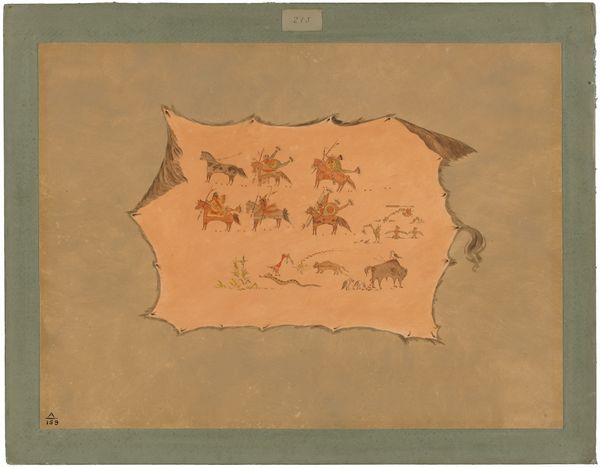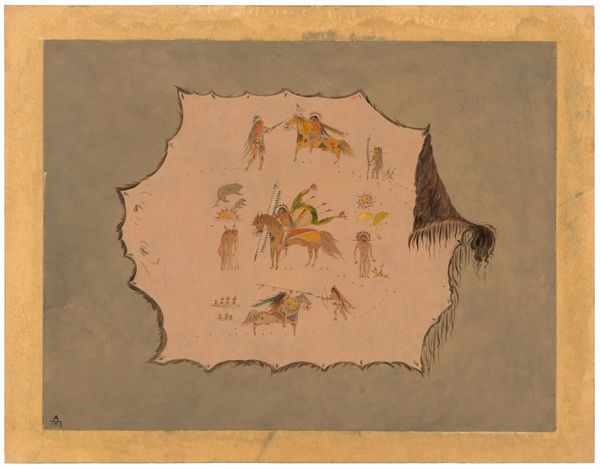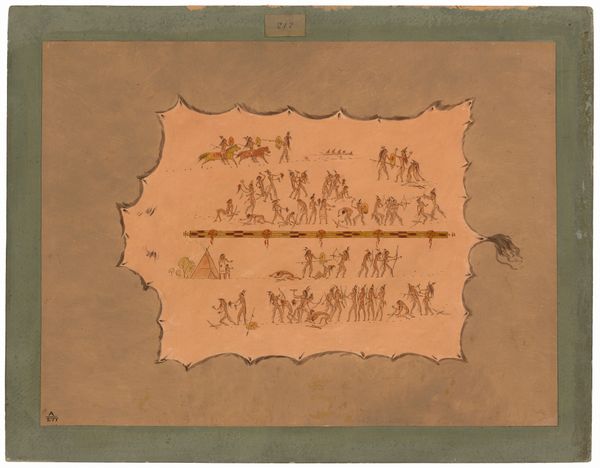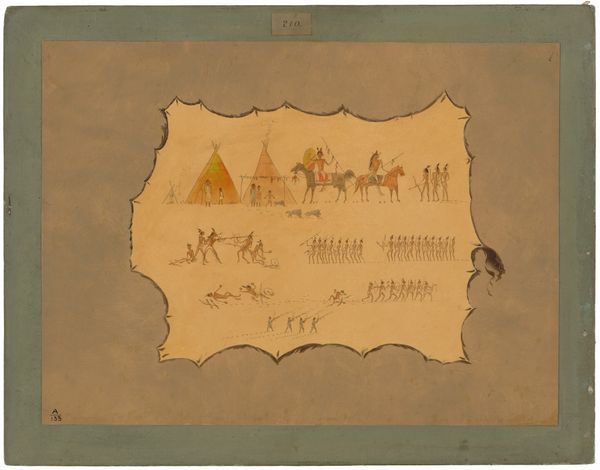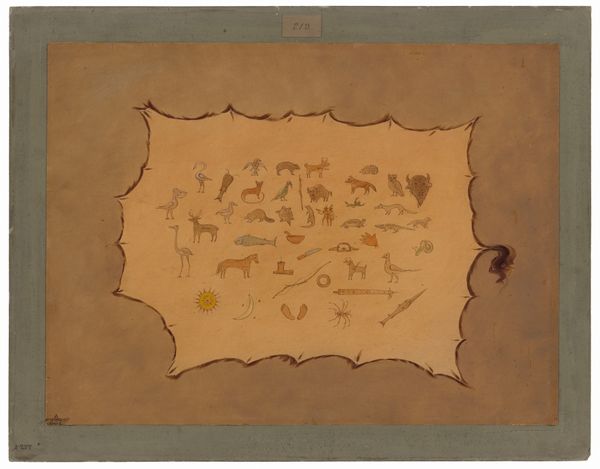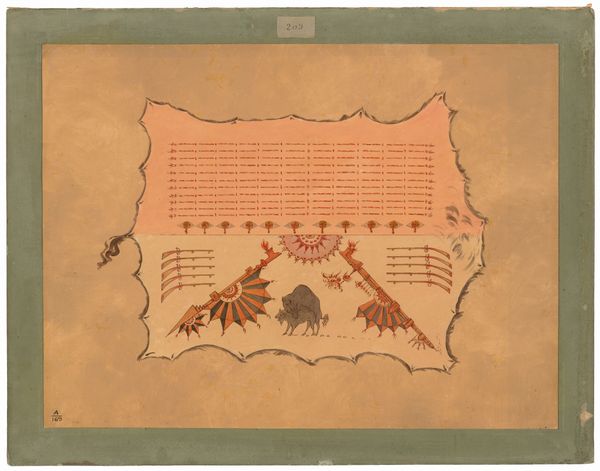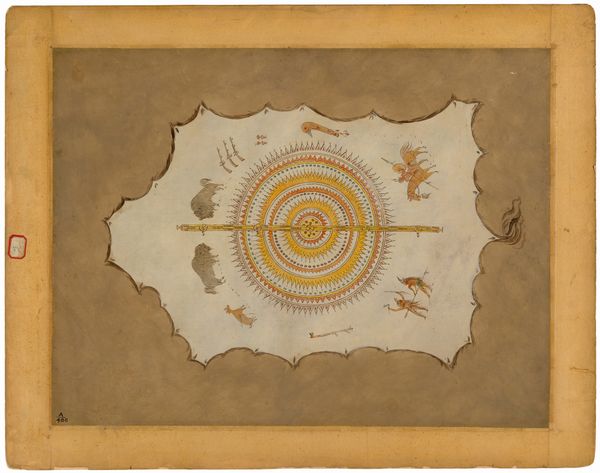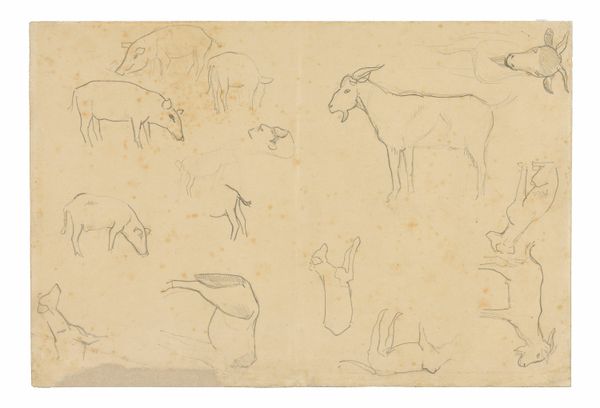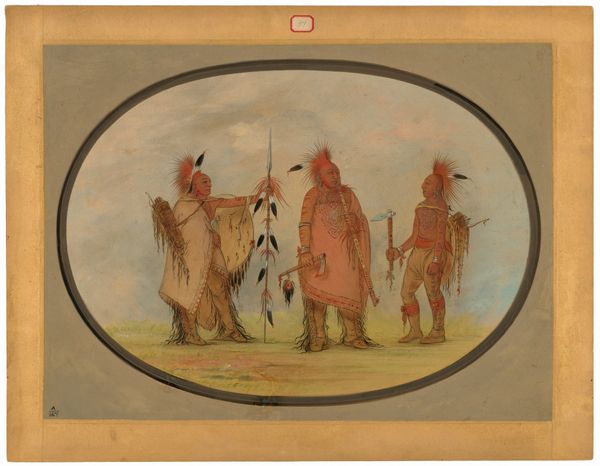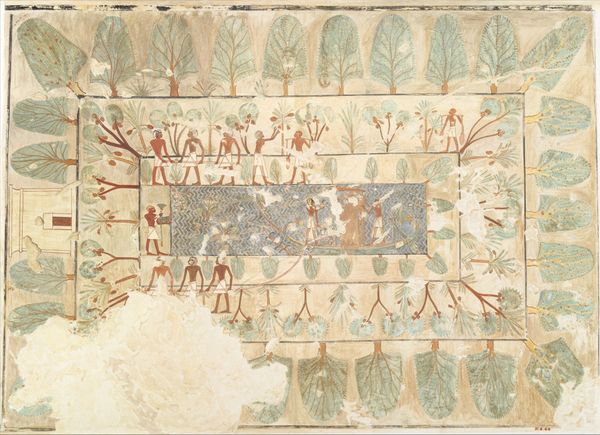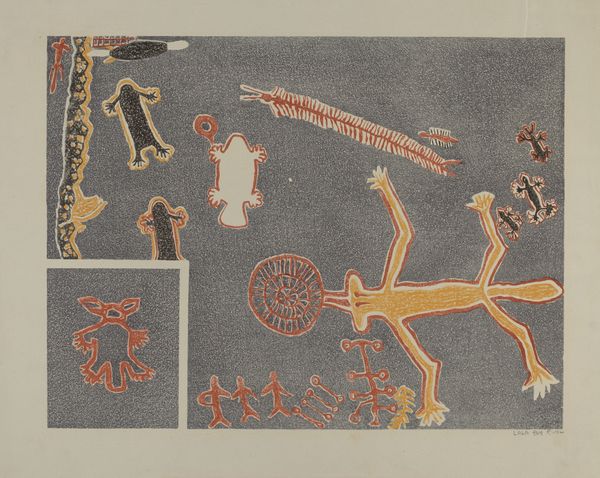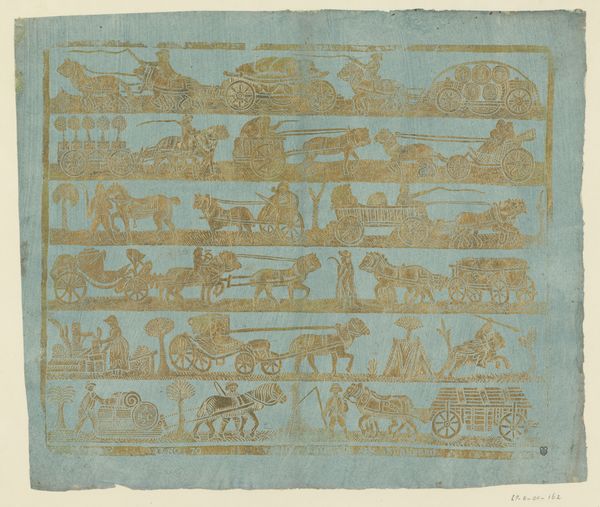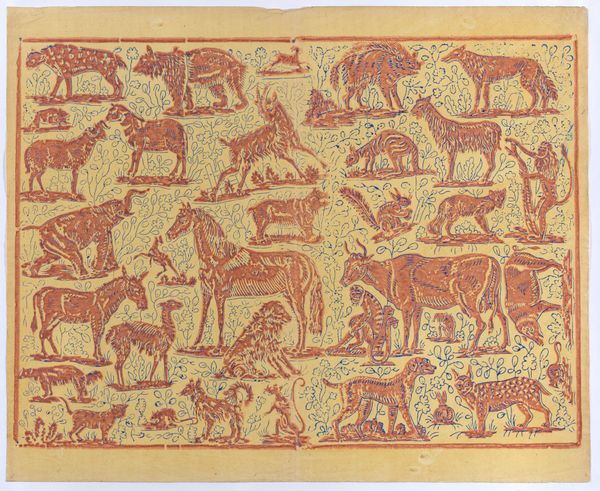
drawing, paper, ink
#
drawing
#
water colours
#
narrative-art
#
figuration
#
paper
#
ink
#
watercolour illustration
#
watercolor
Dimensions: overall: 45.4 x 61.4 cm (17 7/8 x 24 3/16 in.)
Copyright: National Gallery of Art: CC0 1.0
Editor: Here we have George Catlin's "Facsimile of the Robe of Mah-to-toh-pa - Mandan," created sometime between 1861 and 1869 using watercolor and ink on paper. It really looks like a painted hide. It seems to depict scenes of battle or hunting. What story do you see unfolding in this work? Curator: It's a fascinating piece because it sits at a crossroads of representation and cultural exchange. Catlin aimed to document Indigenous life, but through a lens deeply shaped by the colonial gaze and the prevailing narratives of the time. These scenes, likely representing battles or significant events, become part of a visual archive, one that simultaneously preserves and, potentially, distorts. How might the act of creating a "facsimile" alter the robe's original significance? Editor: That's a great question. It’s like, is it really capturing the intended narrative if it's being translated through someone else's interpretation? I mean, how does Catlin's involvement – a non-Indigenous artist creating an image *of* Indigenous art – affect our understanding? Curator: Exactly. Think about the power dynamics at play. Catlin’s work gained popularity and was exhibited, contributing to a specific perception of Indigenous people. What was shown, and how it was shown, shaped public opinion and influenced policy, impacting the Mandan people themselves. It also begs the question, for whom was this narrative actually intended? Editor: So, it's less about a straightforward historical document and more about understanding the context in which it was made and viewed. I didn’t really consider all those layers before. Curator: Precisely. The history of art is intertwined with social and political forces. Even a piece that seems to be simply representing history is, in fact, actively shaping it. This robe is a perfect example. Editor: This makes me want to really research how other Indigenous artists have depicted similar events or narratives. Thank you. Curator: Indeed. By analyzing these historical works and bringing new perspectives to these pieces, you actively engage with the continuing role and ethics of cultural preservation.
Comments
No comments
Be the first to comment and join the conversation on the ultimate creative platform.
